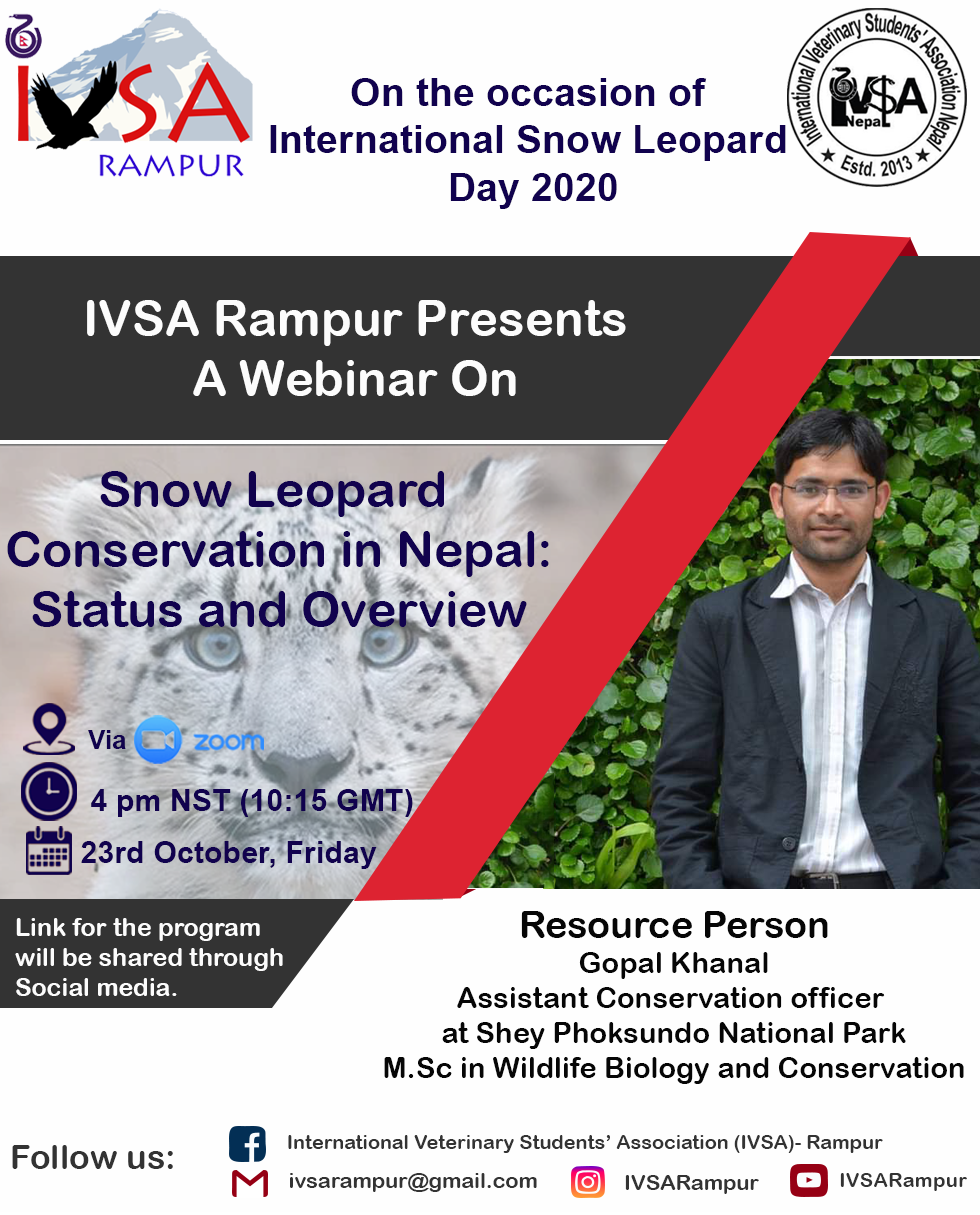
World Snow Leopard Day is celebrated to commemorate the Bishkek Declaration, which was endorsed on 23 October 2013 by the governments of twelve snow leopard range countries, to ensure that Snow Leopards and the people who live among them thrive in healthy ecosystems that contribute to the prosperity and well-being of the planet. The Bishkek Declaration set a goal of ensuring that there are at least 20 protected snow leopard habitats by 2020, and led to the formation of the Global Snow Leopard and Ecosystem Protection Program (GSLEP). Since then, October 23 is celebrated each year as International Snow Leopard Day.
Nepal is home to around 500 endangered snow leopards, constituting one-tenth of the world's snow leopard population. Despite Nepal's continual effort to save the snow leopard, its long-term viability is threatened by the conflict from livestock depredation and retaliatory killings, poaching, and loss of habitat because of the high density of livestock in grazing areas. Hence, the awareness of Snow leopards’ conservation was felt necessary.
So, to mark this day and spread information about Snow Leopards, IVSA Rampur organized a webinar entitled, 'Snow Leopard Conservation in Nepal: Status and Overview, where we had Mr. Gopal Khanal as our resource person. Gopal Khanal currently works for Shey Phoksundo National Park office, Dolpa as an Assistant Conservation Officer. He has been working on snow leopard research and conservation in the Nepal Himalayas since 2014. He holds an MSc degree in wildlife biology and conservation from National Centre for Biological Sciences, Bangalore, India. He was also part of the Snow Leopard satellite telemetry expedition team in Dolpa in 2019.
The webinar was scheduled for 4 pm via the online platform of Zoom, on the auspicious date of World Snow Leopard Day. Our resource person, Mr. Gopal Khanal began his presentation by explaining the influential historical books about snow leopards and mountain monarchs which were published around 1970. He was so smooth and confident in presenting the status and some numerical facts of snow leopard and highlighted the photos of snow leopards collared so far in Nepal. The participants were some knowledge about the recent research on snow Leopard at Shey Phoksundo National Park and other milestones in the field of research on snow leopard. Mr. Khanal concluded his session highlighting the major roles and opportunities for veterinarians in the field of snow leopard conservation. He also forwarded his hope and expectations from veterinarians regarding new research about potential diseases on snow leopards and the use of technologies including genetics to reveal wildlife health and behavior.
The webinar was hosted by Mr. Somnath Aryal, secretary of International Veterinary Students, Rampur. We had a total of about 35 participants. The presence of Dr. Eric Eisenman, representing International Veterinary Outreach, and Mr. Karan Shah, Professor of Zoology at Tribhuvan University made this webinar worth remembering. The webinar was carried interactively with interesting questions from participants. Dr. Eric Eiseman, a representative from International Veterinary Outreach proposed our resource person Mr. Gopal Khanal to work collaboratively in the field of wildlife conservation. Mr. Khanal welcomed his proposal and kept his words to work in collaboration in their further projects.
Thus, the program highlighted the conservation strategies of Snow leopard and became fruitful to all the participants including students from the Veterinary field. As the course syllabus of the veterinary sector mostly features domestic animals, this webinar relating wildlife imparted the knowledge and concerns of veterinary students towards the wildlife field.
